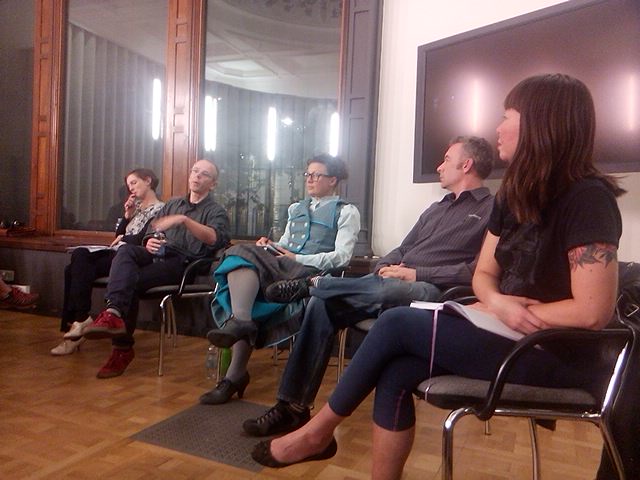Reflections on Design Culture Salon 10: How is the Urban Mobile Cyclist designed?
The question of whether or not you choose to cycle to work is more than a practical decision: it can reveal a lot about our gender, social background and personality. It also forces us to behave in particular ways. Friction between cyclists, motorists and pedestrians now forms part of the everyday experience of moving through the city. It also appears to have become a politically charged area of debate. So, does design have the capacity to soothe this friction? What role has design played thus far in enabling or disabling the identity of the urban mobile cyclist? These were some of the questions we set out to address at the first of the third series of Design Culture Salon at the Victoria and Albert Museum on Friday 10 October.

Kat Jungnickel acted as Chair for the evening’s discussion. Kat has been working on an exciting project called ‘bikes and bloomers’ at Goldsmiths University, where she is lecturer in sociology. Through this project, Kat has identified a longer history of the relationship between cycling, gender and notions of citizenship which can be traced to the Victorian era, when women sought to negotiate the cultural boundaries around cycling. One way they did this was by designing and lodging patents for innovative forms of cycling clothing and Kat has reproduced some of these designs by hand. At the Salon, she modelled a style designed and patented by Mary Anne Ward of Bristol in 1897. This provided a fascinating and vivid introduction to the historical relationship between fashion, cycling, citizenship and gender.
Each of the panellists then delivered responses to these themes. Rachel Aldred, from the University of Westminster highlighted the notions of empowerment and danger as key issues, while Carlton Reid, editor of Bike Biz and author of ‘Roads were not built for cars’, spoke of the need for a stronger cycling culture in Britain, which might be built up over a long period of sustained development. Jenni Gwiazdowski, founder and director of the London Bike Kitchen in Hackney, described her experience of confronting the everyday urban mobile cyclist and said that many are ‘terrified’ of their bicycles. The London Bike Kitchen acts as a learning space in which to build cyclist’s confidence by teaching valuable lessons in fixing and safety. Justin Spinney from the University of Cardiff, the final speaker for the evening, directly addressed the evening’s question by asserting that designers should be more imaginative in how they approach the bicycle, both as an object and an idea. In the conversation which ensued, the panelists and audience agreed that cycling culture has become too exclusive and elitist in the UK and design could help open up a bigger space in which to empower the cyclist of all ages, backgrounds and gender.
We will return to look at many of the themes addressed in this salon (mobility, age, citizenship) in future Salons this series. Next month, on the 14 November, we are moving from cycling to Fashion Cycles! Book here now.
A more detailed version of this blog is posted on designculturesalon.org.



